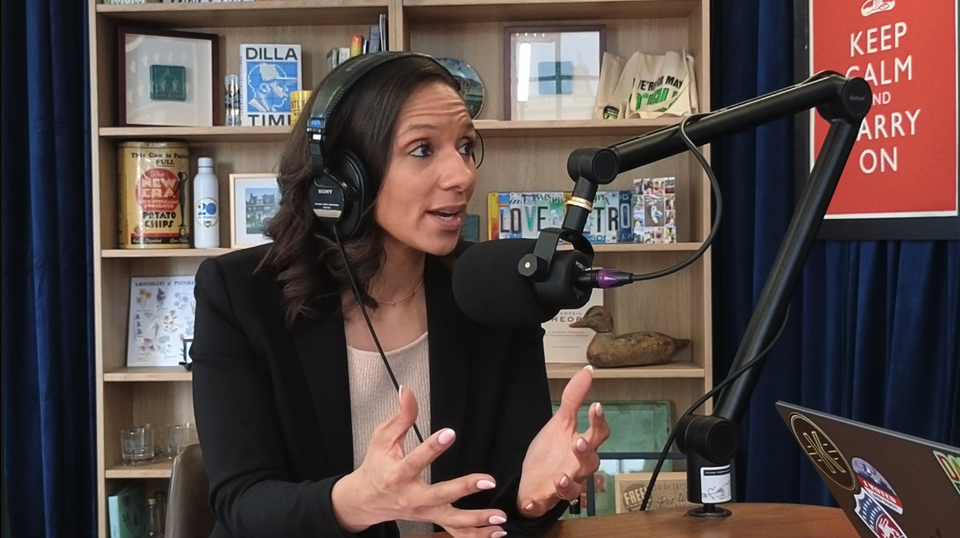Michigan education officials’ aggressive school closure plan faces a major challenge: It’s unlikely that most students displaced by closures will end up in substantially better schools.
That’s because there are few schools in struggling cities like Detroit that have test scores significantly higher than the schools facing closure.
The 38 schools — including 25 in Detroit — on the dreaded list have all spent at least three years in the bottom 5 percent on a state ranking that measures test scores and graduation rates.
In closing the schools, officials say they hope students will move to higher-performing academies — ideally ones whose ranking is at or above the bottom quarter.
“We want these kids to enroll in a school that’s at least a 25 ranking or higher,” said Natasha Baker, who heads the state school reform office. “Our goal is to make sure that every kid in the state of Michigan has access to a quality education so they have the skills necessary for a high-wage job, a career or college.”
But if a 25 ranking or higher is the goal, most kids in closing schools won’t get there.
In Detroit, where 25 schools serving roughly 12,000 kids are on the chopping block, there are only 19 schools with scores above the bottom quarter, many of which are full to capacity.
Just two of the higher-performing schools are high schools — and neither is likely to take many new students.
“Honestly, we are always full and we have a full waiting list,” said Adnan Aabed, the principal of Frontier International Academy, a Detroit charter school that last year posted test scores in the 39th percentile.
The other Detroit high school ranked above 25 percent was Renaissance High School, a highly selective district school that ranked in the 48th percentile.
Even Cass Tech, the city’s historic premier high school, didn’t break the 25 percent threshold on last year’s rankings. In 2016, Cass Tech was in the 21st percentile among state schools.
That means that the more than 4,000 students who are now attending the 10 Detroit high schools that are slated for closure are not likely to land in a school whose ranking is much higher the school they attend now.
Students who live near the city’s borders could attend schools in the nearby suburbs but city bus lines often don’t connect with suburban ones so traveling to a suburban school can often be difficult.
The mismatch raises questions about how many schools the state School Reform Office will actually go through with closing.
Officials have said they would allow low-scoring schools to stay open if students would face “unreasonable hardship” when finding a better school. Baker said her office would make final decisions that will take available alternatives into account by early March..
She acknowledged on Friday that finding high-ranked schools will be a challenge in some communities.
“Some of the schools are in such depressed areas where you wouldn’t find a school at an 80 rating unless you went 50 to 75 miles out,” Baker said. She added that many of the higher-ranked schools “either have closed enrollment processes or it’s just really difficult to get into those schools.”
The state is sending letters to parents of children in closing schools that offer suggestions for nearby charter schools or district schools that are above the 25 percent threshold.
The absence of strong alternatives will be one factor that the state will consider as it makes final decisions about closings over the next month and a half.
If the Reform Office decides not to close a school on the list, it will take steps to try to improve it.
Such steps can be effective. The state announced on Friday that 79 schools that had been on the so-called “priority” list due to years of low performance had improved enough to be removed from the list.
The Frontier International Academy had been on that list a few years ago, Aabed said, noting that he was brought in to turn things around as part of the state’s intervention.
His school, where roughly half of students come from countries like Bangladesh and Yemen and don’t speak English at home, focused on teacher training, using data to understand student needs and other efforts, he said.
“We honestly have so many initiatives going on that we implemented in 2010 and 2011 and that’s why you see the scores even now going higher,” he said.
Detroit school officials say they hope they, too, will get time to show they can improve their schools. After years under state control, Detroit schools were just returned to a locally elected school board this month.
Local school officials announced Monday that they plan to hold a school improvement summit to highlight ways that other urban districts have shown improvement for struggling schools.
Detroit officials have also said they are considering filing suit to block school closings. School board member LaMar Lemmons said the board is planning to meet with lawyers on Tuesday.
“They are holding us to the test results that students received when the state was operating the district,” Lemmons said. “We not only think that’s unfair, we think it should be illegal.”
The Detroit schools that ranked above the bottom quarter on the 2016 state ranking list were:
Detroit Edison Public School Academy, K-8, ranking: 87
Detroit Enterprise Academy, K-8, ranking: 51
Detroit Merit Charter Academy, K-8, ranking: 58
Chrysler Elementary School, K-5, ranking: 56
Renaissance High School, ranking: 48
University Preparatory Science and Math (PSAD) Middle School, 6-8, ranking: 45
Cesar Chavez Academy Intermediate, 3-5, ranking: 44
Hope of Detroit Academy, K-8, ranking: 43
Detroit Premier Academy, K-8, ranking: 42
Frontier International Academy, high school, ranking: 39
Martin Luther King, Jr. Education Center Academy, K-8, ranking: 38
New Paradigm Glazer Academy, K-8, ranking: 38
Oakland International Academy – Middle, 5-8, ranking: 38
Bates Academy, K-8, ranking: 34
New Paradigm Loving Academy, K-8, ranking: 33
Wright, Charles School, K-4, ranking: 32
Foreign Language Immersion and Cultural Studies, K-8, ranking: 29
Old Redford Academy – Middle, 6-8, ranking: 29
Weston Preparatory Academy, K-8, ranking: 25
Editor’s Note: Chalkbeat is a nonprofit news site covering educational change in public schools. Their content is reposted here with permission.














